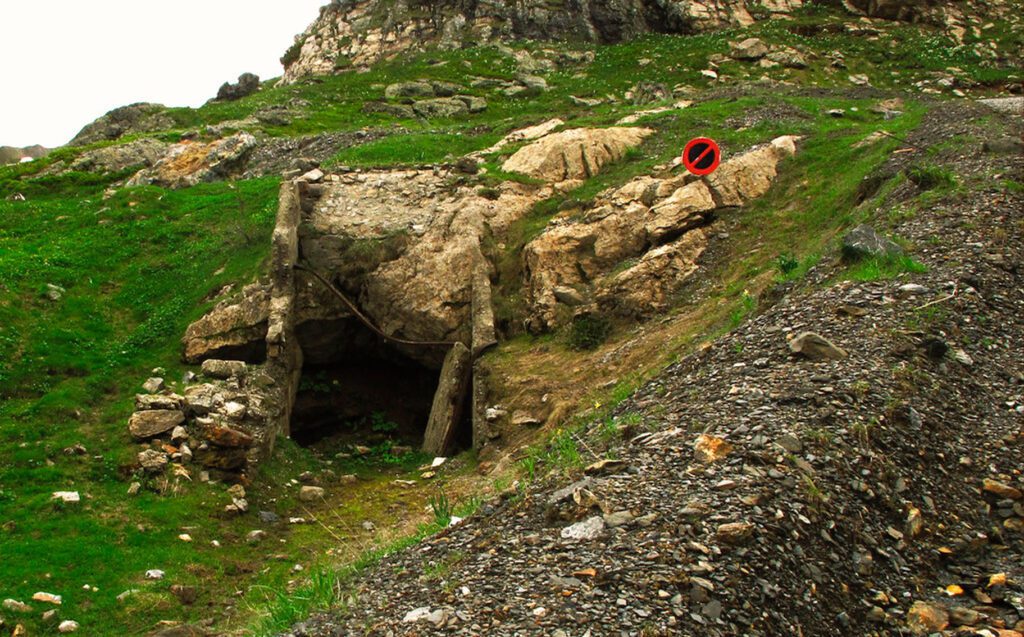GALICIAN MINING ROUTES

GALICIAN MINING ROUTES The Galician mining routes hook those who follow them, the hard work on the rock impresses. The traveler will discover the sacrifice that thousands of men made for years fighting against nature to extract its riches. Today, already fallen into abandonment, the forests have regained the lost ground, giving them a mysterious and captivating aura. The Medans Mine route In front of the bridge over the railway there is a track. Shortly after starting to walk along it, you can see the beginning of a narrow valley on the left. It is a ditch of Roman origin to extract gold. Tin and tungsten mines of Beariz (Ourense) Located geologically in the Central-Iberian area. Granites originated 450 million years ago. Presence of Tin and Wolfram, very scarce in the Earth’s crust. Wolfram exploitations, especially during the wars of the 20th century. Baldrei and Los Milagros Mines in Maceda (Ourense) Located in the Central-Iberian area, in the Ollo de Sapo Domain. At the beginning, the basement is formed by granitic and metamorphic rocks from the Variscan orogeny. It ends in sedimentary materials from the Quaternary (less than 4 million years old). Vilanova Mine (Ourense) Located geologically in the Central-Iberian Zone, in the Ollo de Sapo Domain. It begins in a rock of the granite family, rich in Biotite (black mica with iron) with large feldspar crystals. Schists and Quartzites from the Capas de los Montes Formation. El Golfo Ártabro Mines (A Coruña) Allochthonous origin. Flysh appearance, geological formation of sedimentary origin that alternates fine-grained and coarse-grained sediments.
5 BEST GALICIAN LAKES

5 BEST LAKES IN GALICIA Galicia always stands out for its nature and today we bring you the 5 best Galician lakes. These spaces, full of fauna, are also tourist attractions for their river activities, hiking, etc. We start: 1- Belesar Reservoir. It is an artificial swamp created in 1963 on the Miño River, Spain (the largest on this river). Located between the municipalities of Taboada, Chantada, Saviñao, Paradela, Páramo, Guntin and Portomarín. Its capacity is 655 hm³, occupying an area of approximately 1910 hectares and presenting a queue of 50 km. 2- As Pontes Lake. This natural and recreational space is perfect for practicing water sports. Its beach, with an average temperature throughout the year of 22 degrees, is one of the great attractions of the lake. The uses of this large lake are multiple, on the one hand the rich landscape of the area, sports use (especially water sports) or the great tourist attraction of having an emblem like the lake of As Pontes. 3- Lagoa de Sobrado. Near the Monastery of Sobrado is located the well-known lagoon of the same name. Protected by the Natura 2000 Network, Lagoa de Sobrado dos Monxes becomes one of the most important and interesting wetlands in the geography of Galicia, both for its rich flora and birdlife. The large trout of up to 2 kg that live in the lagoon stand out and are used as reproducers in spawning and breeding fish farms of the Xunta de Galicia. 4- Encoro da Fervenza. The Fervenza Reservoir, in A Coruña, is one of the largest reservoirs in Galicia due to its extension. The Embalse da Fervenza, encoro da Fervenza in Gallego is 27 meters high and 127 meters long and is an artificial reservoir that is used primarily for hydroelectric production. It is an authentic natural space, in which various aquatic birds have found a resting place, due to the ideal ecosystem characteristics to feed on fish in its waters. 5- Encrobas Lake. This large pool of fresh water measures 2.2 kilometers long and has a depth of 205 meters. The Lake, which was used as a mine in the past, was composed of a mineral known as lignite, black in color, low in heat capacity and highly polluting, due to large CO2 emissions. Starting in 2008, the lignite disappeared and the mine shaft began to fill with water. The Lake has almost 1,000 different animal and plant species -some of them are endemic and of great ecological value-. In addition, a project designed by the company Naturgy decided to cover the area with 450,000 trees.
